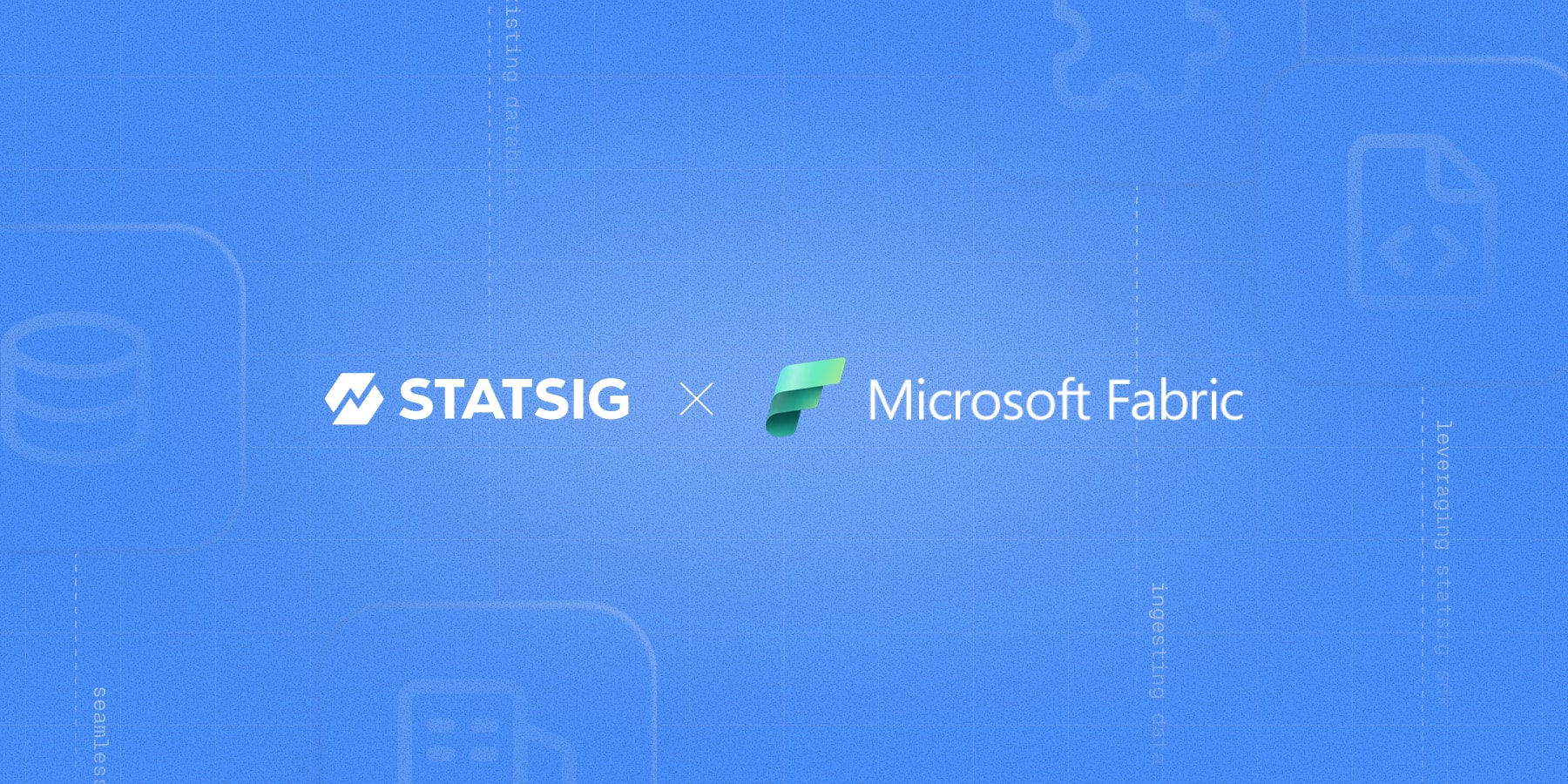
Now you can run Statsig's experimentation and analytics tooling directly on top of Microsoft Fabric.
Today, we’re excited to announce that Statsig’s experimentation and analytics solution is available as a workload in Microsoft Fabric.
Fabric customers can now run our powerful tools directly on their source-of-truth datasets — helping them innovate faster and build great products.
“By bringing Statsig’s advanced experimentation and analytics engine to Microsoft Fabric, customers can easily test product ideas, iterate quickly, and act on trusted insights—with the power of Fabric Data Warehouse and Microsoft OneLake. Together we’re helping teams go from hypothesis to impact with confidence, driving product growth and innovation.”
- Dipti Borkar, Vice President & General Manager, Microsoft OneLake and Fabric ISVs.
The challenge
Building and scaling great products takes teamwork, clarity, and the right data — but pulling it off is easier said than done.
Engineers manage feature flags in one system while Data Scientists analyze experiments in another. Marketers use their own dashboards for campaign optimization, while Product Managers stitch data from multiple sources to drive adoption and retention.
Despite having the same ultimate objective, each team ends up using different tools with different metrics and logging processes, leading to redundant infrastructure and duplicated product data.
Due to this context fragmentation, decision-making gets significantly delayed, which slows product development and causes missed opportunities.
A trusted platform to accelerate product innovation
Microsoft Fabric centralizes data securely in Microsoft OneLake. With Statsig’s native integration, teams can experiment and analyze metrics directly on Microsoft OneLake data using Fabric Data Warehouse, built on a lake-centric architecture supporting open data formats.
This unified platform ensures team alignment, consistent metrics, and collaboration without the need for extra data pipelines to unify or duplicate data. Customers get two tightly integrated tools:
1. Experimentation - Test like the best
Run Statsig’s powerful stats engine directly on top of your Fabric data. Apply advanced testing techniques like sequential testing, multi-armed bandits, holdouts, and built-in methodologies such as CUPED, stratified sampling, and differential impact detection.
Empower your teams to design and run hypothesis-driven A/B/n experiments using the same metric definitions already defined in Fabric — enabling speed and consistency.
2. Analytics - Get insights throughout the product development cycle
Once you’ve added the Statsig integration from the Microsoft Fabric Workload Hub, users simply point Statsig to the relevant tables to begin analysis.
Using Fabric Data Warehouse’s advanced capabilities, users can run a variety of queries on the metrics and dimensions that matter most - applying group-by, drilldowns, funnel user journeys, and more — all powered by your trusted OneLake data.
Faster decisions. More flexibility. Full trust.
With trillions of events streamed per day, Statsig’s Warehouse Native is trusted by hundreds of companies to increase their experimentation velocity and build a data-driven culture anchored in a trustworthy source of metrics.
Customers get:
Richer insights from warehouse data: Leverage data from your warehouse to run powerful, multidimensional analyses. For example, e-commerce platforms like Whatnot can break down experiment results by buyer persona or product category.
Full transparency: Data teams can validate by tracing back to the underlying SQL, which builds confidence in the system as you scale.
“Previously we had to add all the metrics before the experiment starts. With Warehouse Native, we add things on the fly, so if you mess up something during set up, there aren’t any consequences.”
- Jared Bauman, Engineering Manager, Whatnot
Ready to build faster and smarter?
You can choose to use Statsig’s integrated, end-to-end platform or adopt a subset of capabilities that best fit your team’s workflows. Connect your Fabric data in just a few clicks and get started!
